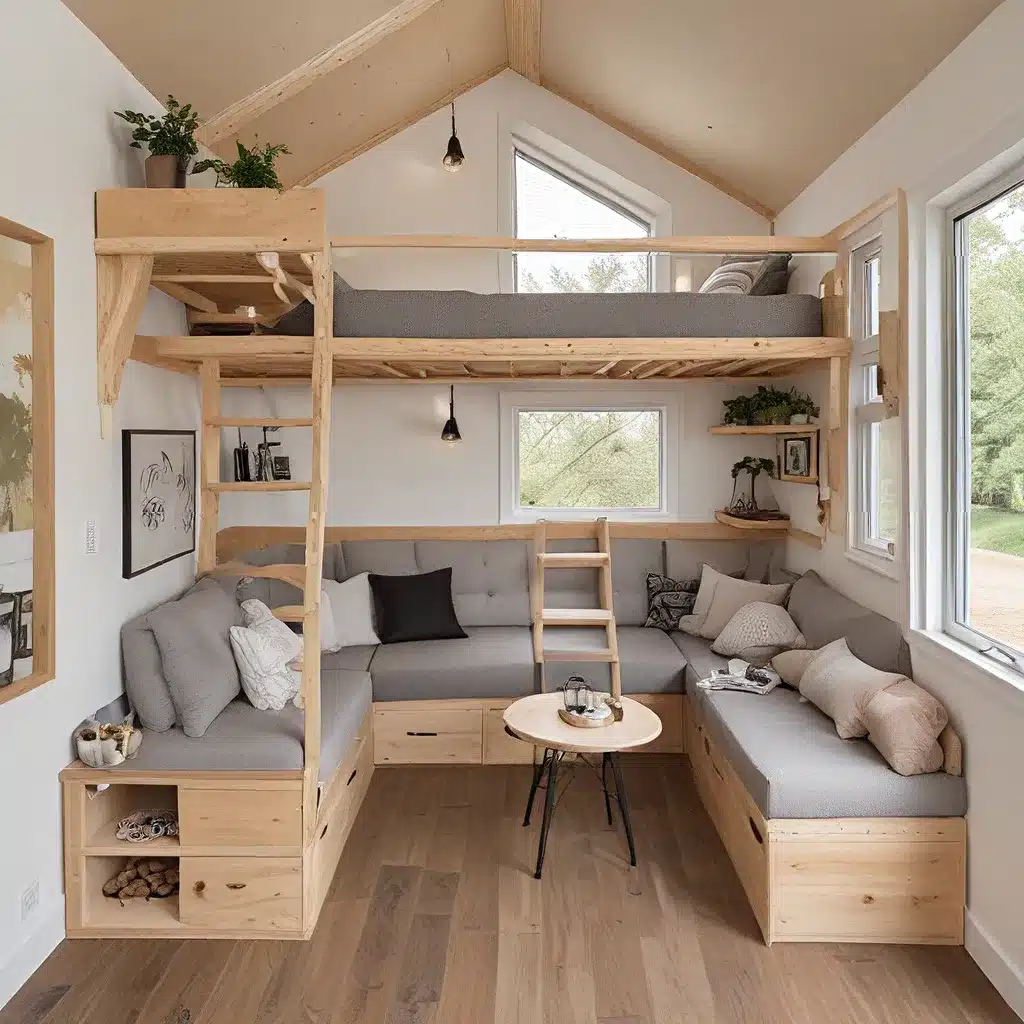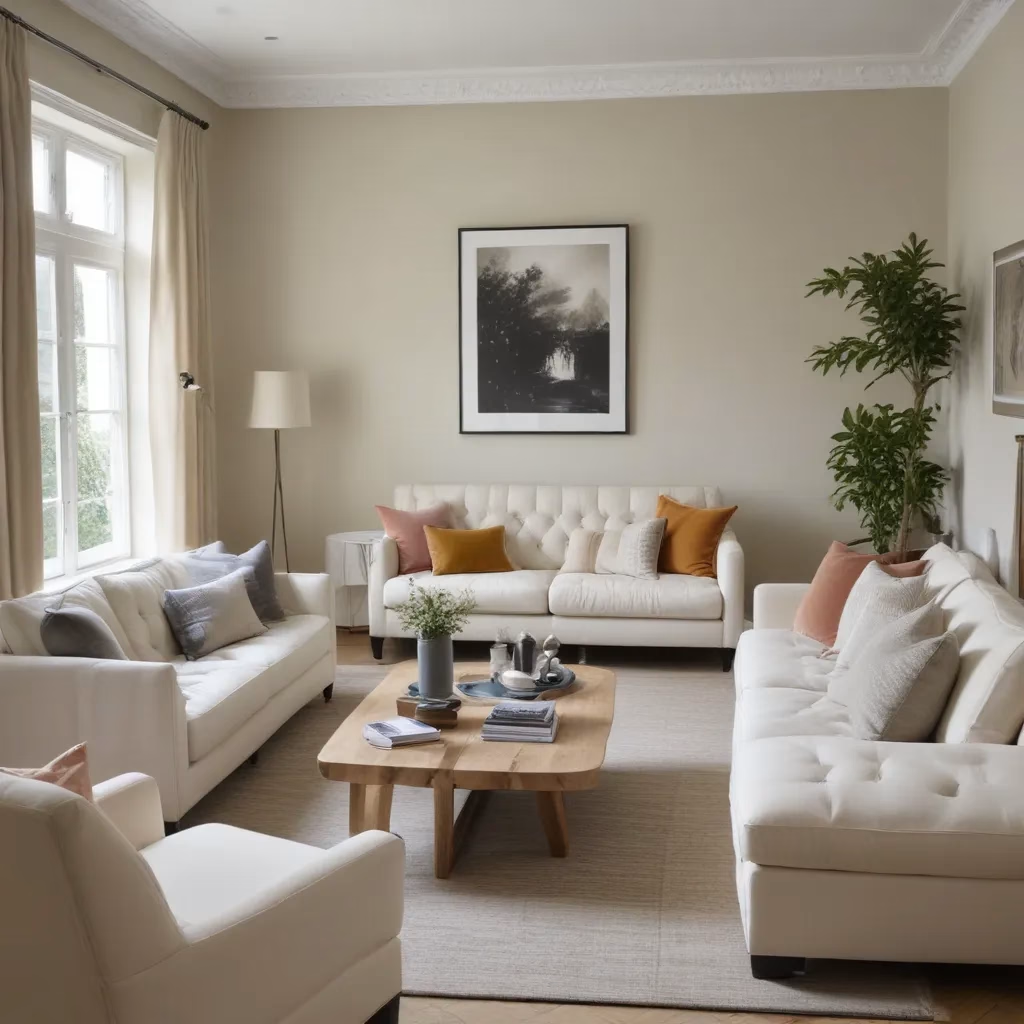
When it comes to the ever-evolving world of home design, one thing is clear – the demand for smaller, more efficient living spaces is on the rise. As population growth and housing costs continue to put the squeeze on our living situations, particularly here in the UK, the need for creative, adaptable furniture solutions has never been greater.
I’ve always been fascinated by the ingenious ways designers and homeowners are rethinking the way we use our limited square footage. It’s amazing to see how innovative furniture can transform a tiny home into a functional, stylish oasis. And let me tell you, the team at Sofa Spectacular has truly outdone themselves when it comes to crafting flexible, multifunctional pieces that cater to the unique needs of small-space dwellers.
Blurring the Lines Between Work and Home
One of the biggest challenges faced by those living in tiny homes is finding the right balance between work and personal life. As more of us work remotely or from home, the lines between our professional and private spheres have become increasingly blurred. This can make it a real challenge to create a dedicated workspace that doesn’t feel like it’s encroaching on our precious downtime.
The Interior Editor highlighted some ingenious solutions to this dilemma, like the Industrial-styled Dining Table/Desk from Italian brand Manoteca. This clever piece allows you to hide away your work paraphernalia when it’s time to relax, seamlessly transitioning from a functional workspace to a stylish dining table.
Another standout piece is the Mid-Century Pop-Up Storage Coffee Table from West Elm. This coffee table not only provides a hidden workspace, but it also cleverly incorporates storage for all your work essentials. It’s the perfect solution for those who love to work from the comfort of the sofa but don’t want a cluttered living room.
Modular Magic: Adaptable Seating for Compact Spaces
When you’re short on square footage, every inch counts. That’s why I’m particularly enamored with the modular chair and table system designed by Orla Reynolds, appropriately dubbed “Chairs-From-Nowhere.” This ingenious setup allows you to customize your seating arrangement to suit your needs, whether you’re hosting guests, working, or simply relaxing.
The beauty of this design lies in its hidden, collapsible nature. The brightly colored chairs and tables can be slotted into a bookcase configuration, keeping them out of sight when not in use. This frees up valuable floor space while still providing you with the seating you need, exactly when you need it.
One Home Therapy highlighted the importance of adaptable furniture in creating future-ready homes, and the Chairs-From-Nowhere system is a prime example of this principle in action.
Multifunctional Marvels: Beds, Desks, and Beyond
Of course, no discussion of adaptable furniture for tiny homes would be complete without mentioning the ingenious convertible pieces that have become increasingly popular in recent years. Take, for instance, the Studybedcouk – a versatile piece that transforms from a comfortable bed to a functional workspace with the simple flick of a switch.
Dwell highlighted the appeal of these multipurpose furnishings, noting that they allow tiny homeowners to maximize their limited square footage without sacrificing functionality or comfort.
Another clever solution is the Table Plus from Magnet, a pull-out table design that can be easily installed in the kitchen or any other underutilized wall space. This flexible, space-saving piece provides both a hidden work surface and additional storage – perfect for those who need to squeeze every last bit of usefulness out of their tiny abodes.
Embracing the Unexpected: Designing for Flexibility
As I’ve delved deeper into the world of adaptable furniture for small spaces, I’ve been struck by the sheer creativity and ingenuity on display. These designers aren’t just creating practical solutions – they’re pushing the boundaries of what’s possible in home design.
Take, for example, the “Sekretaer Flatmate” from the German company Magazin.com. This sleek, minimalist piece folds flat against the wall, revealing a hidden pull-down desk when you need it. It’s a clever, space-saving design that seamlessly blends form and function.
What I find most inspiring about these innovative furniture pieces is the way they encourage us to rethink our preconceptions about how we live and work. By embracing flexibility and adaptability, we can create homes that truly reflect our evolving needs and lifestyles.
Balancing Work and Play in Tiny Homes
Of course, one of the key challenges of living in a tiny home is maintaining a healthy work-life balance. As the line between our professional and personal spaces blurs, it’s easy to feel like we’re always “on,” constantly surrounded by the tools and distractions of our jobs.
That’s why I love the insight from The Interior Editor about the importance of hiding our work away when it’s time to relax. As the proverb goes, “All work and no play makes Jack a dull boy” – and I couldn’t agree more.
By incorporating flexible, adaptable furniture into our tiny homes, we can create intentional boundaries between our work and personal lives. When the workday is done, we can simply fold away our desks, tuck our laptops into hidden compartments, and enjoy the uninterrupted comfort of our living spaces.
The Future of Tiny Home Living
As I look to the future of tiny home design, I’m excited to see how the trend towards adaptable, multifunctional furniture will continue to evolve. Designers and innovators are just scratching the surface of what’s possible when it comes to maximizing limited space while maintaining style, comfort, and functionality.
Perhaps we’ll see even more seamless integration of technology into our furniture, allowing us to transition effortlessly between work and leisure. Or maybe we’ll witness the rise of modular, customizable systems that can be endlessly rearranged to suit our changing needs.
One thing is certain: the demand for flexible, adaptable living solutions is only going to grow as housing costs and population density continue to rise. And with companies like Sofa Spectacular leading the charge, I have no doubt that the future of tiny home living will be both inspiring and functional.
So, if you’re like me and find yourself captivated by the creative potential of adaptable furniture, I encourage you to keep exploring, experimenting, and embracing the unexpected. After all, the key to thriving in a tiny home just might lie in the flexibility of our furnishings.



